Who was King Arthur? He is certainly the most enduring figure of British legend, whether or not he existed in fact. Most legends are born in some sort of fact, so it is likely that there was an Arthur. Was he the noble champion who will awake one day to free the British from bondage? Or was he the chivalrous knight with Christian virtues? Or was he a guerrilla fighter, striving against the Saxon hordes? We shall probably never know but the legends persist and nowhere more than in the far west of England.
Legend says that Uther Pendragon fell in love with Ygerna, the wife of Duke Gorlais of Cornwall. Merlin disguised King Uther as Gorlais so that Ygerna thought he was her husband, when he came secretly to her bedchamber in the castle of Tintagel. On the following day, by accident or by design, Gorlais was killed in battle, so Uther promptly married Ygerna. Arthur was their son, who was born in Tintagel. The castle remains here are much more recent than the legendary times of Arthur, but there are signs of a much earlier settlement. The cave below the castle is known as Merlin’s Cave and the old magician is said to haunt it.
At the age of 15, Arthur became king following the death of his father. He defeated the Saxons, the Picts and the Irish in various battles before enlisting the aid of his relative, Hoel of Brittany to restore the remainder of his kingdom. Next he married Guinevere, reputedly the most beautiful woman in Britain. She was the ward of Duke Cador and a lady of noble descent from the Romans.
After conquering Ireland and receiving homage from other parts of Britain, Arthur set about making his court world famous. He continued to make warlike excursions to various other countries, conquering Norway and France. He defeated a giant at Mont-Saint-Michel and was about to mount an attack against Rome itself, when he heard that his throne had been stolen by his nephew, Mordred, who had taken Guinevere as his mistress.
Various battles ensued on Arthur’s return to Britain and he defeated Mordred three times in all: at Richborough; at Winchester; and finally at Camlan in Cornwall, where Mordred was slain and Arthur mortally wounded. He bequeathed his crown to his cousin Constantine, who was the son of Duke Cador of Cornwall. King Arthur’s last battle at Camlann and his subsequent death are recorded in the British Easter Annals of the year 539.
According to Geoffrey of Monmouth this battle took place alongside the River Camel and the site was later identified as a water meadow at Slaughter Bridge, near Camelford. Various relics and pieces of armour have been found in this area, but are thought to have survived from a later 9th century battle. Slightly upstream, on the river bank, is a flat stone slab known as King Arthur’s Tomb. The stone contains a weathered Latin inscription identifying it as the tomb of Latinus, son of Magarus, certainly not as King Arthur. Apparently the stone was only moved to this location in the 18th century. Perhaps this was an effort to substantiate the claims of Carew, in the early 17th century, that a stone could be seen there bearing the name of Arthur.
Camelford probably derives its name from the Cornish words for a curved river, “cam pol”. Some claim that this is the site of King Arthur’s court but Cadbury Castle in Somerset has long been identified with Camelot. In 1542, John Leland claimed that local legend had long held this to be the location of Arthur’s palace. It is certainly an old construction, originally the site of an Iron Age fort and later occupied by the Romans. It was certainly reconstructed during the time Arthur is believed to have occupied it. There is also a legend of the Wild Hunt, led by King Arthur, down a track known as King Arthur’s Lane. It is said that his hounds could be heard baying as they rushed along the lane on a wild winter night. Similar legends of the wild hunt exist in both Wales and parts of France.
In the early 12th century, Geoffrey of Monmouth wrote that King Arthur was mortally wounded at the battle of Camlann and was taken to the Isle of Avalon to be healed. There have been lots of conjectures about the derivation of the word Avalon. Some mediaeval writers believed it came from the old English word “aval”, meaning apple. The Welsh words for Avalon also translate as the island of apple trees. From the time of Geoffrey of Monmouth, Avalon has been associated with Glastonbury, as Glastonbury Tor and the surrounding area was certainly an island at one time. There is a great deal of evidence of early habitation of this area, including evidence of early Christian sites.
Around the end of the 12th century, the monks of Glastonbury are known to have searched for the grave of King Arthur and claimed to have discovered it. Apparently this had no effect on the rumours that the “Once and Future King” would return one day, although it may have been an attempt by the church to refute what was considered to be a sacrilegious belief. However, archaeological excavations in the 1960s revealed that not only had there been a 6th century fortress on this site but that the grave described by the monks does in fact exist, although it is now empty.
Once again, Geoffrey of Monmouth seems to have been the person who connected Arthurian legend with Stonehenge, claiming that Merlin had transported the great stones from Ireland, using magic.
There is evidence that around the 4th century the Scilly Isles were one large island. And some have proposed that these islands are in fact the Isle of Avalon. There have also been many claims of a submerged forest in Mounts Bay, and the old Cornish name for St Michael’s Mount translated to the hoar rock in the wood. These and several other similar claims have led to the legend of the lost land of Lyonesse, which is also associated with the Arthurian legends, particularly by Carew in his “Survey of Cornwall” in 1602.
The Cornish, the Welsh and the Bretons, once believed that Arthur would return one day. There is an account written in the middle of the 12th century confirming the existence of this belief. Arthur is said to be reincarnated as a Cornish chough but there are also claims that he might have become a raven or even a crow. Apparently an 18th century sportsman took a shot at a raven on Marazion Green and was rebuked by an old man who claimed that the bird might be King Arthur.
The famous Round Table is said to have been constructed following a visit by Arthur to Cornwall. This was shortly after a brawl at court where Arthur’s knights had quarrelled over their precedence at table. A foreign carpenter, whom Arthur met during this trip, offered to make a portable round table at which 1600 could be seated, without anyone taking precedence. Arthur is said to have commissioned the table which was completed within six weeks. It is difficult to see how the table could have been portable, without a little help from Merlin, who is also credited with having produced this piece of furniture. Legend says this fabulous table is buried under Bossiney Mound, which is situated on a side road from Bossiney to Launceston. It is believed that the round table will rise from the mound, one night in midsummer to herald the impending return of King Arthur and his knights.
Arthurian legends which feature the quest for the Holy Grail seem to have developed from another Glastonbury legend. Joseph of Arimathea is said to have established a church at Glastonbury and his descendents, the Fisher Kings, guarded the Grail in their castle. Among the Knights of the Round Table involved in the Quest for the Grail were Sir Galahad, Sir Lancelot of the Lake and Sir Percival. Their exploits and the many other tales of Arthur’s court have inspired poets, writers, musicians and artists through the centuries and throughout the world.
Nevertheless, one of the most sacred sites in Cornwall is St Nectan’s Cell, the place where the Knights were blessed before setting out on their Quest for the Holy Grail. The waterfall falls into the “kieve”, a basin, and has been a place of worship and healing since long before Christian times. Beneath the remains of the original chapel is the room reputed to be the site of St Nectan’s Cell. This site is situated in a lovely hidden, wooded valley close to Tintagel.
Whilst it seems probable that there was a 6th century leader called Arthur, who became something of a hero throughout Britain, many of the other tales were tagged on in mediaeval days to add a little more glamour to the original story. There are many places named after Arthur throughout the British Isles. Two of the Scilly Islets are known as Great Arthur and Little Arthur and everyone has heard of Arthur’s Seat in Edinburgh.
Arthur is said to have finally defeated the Saxons in 518 at Mount Badon. One of the possible sites of this battle has been identified as Badbury Rings in Dorset, an Iron Age fort. Other locations have also been claimed as the site of the battle, but this is the oldest of them.
Trevethy Quoit, on Bodmin Moor, is also known as King Arthur’s Quoit. This is one of the most impressive burial chambers in Cornwall, standing at more than 15 feet high. It actually dates from the Bronze Age period, so is unlikely to have any real connection with Arthur. However, King Arthur’s Hall and Arthur’s Bed are other landmarks on the moor.
Perhaps one of the more interesting places connected with Arthurian legends is the quiet Dozmary Pool, a natural lake which has been a centre of occupation since the Stone Age. This is where the legendary sword, Excalibur, was thrown by Sir Bedivere after the Battle of Camlann and Arthur’s death. Folklore claims that this is a bottomless pool, the residence of the Lady of the Lake. It was here that the younger Arthur rowed out to claim the mighty Excalibur. Dozmary Pool can be found close to Jamaica Inn at Bolventor.
Legend says that Uther Pendragon fell in love with Ygerna, the wife of Duke Gorlais of Cornwall. Merlin disguised King Uther as Gorlais so that Ygerna thought he was her husband, when he came secretly to her bedchamber in the castle of Tintagel. On the following day, by accident or by design, Gorlais was killed in battle, so Uther promptly married Ygerna. Arthur was their son, who was born in Tintagel. The castle remains here are much more recent than the legendary times of Arthur, but there are signs of a much earlier settlement. The cave below the castle is known as Merlin’s Cave and the old magician is said to haunt it.
At the age of 15, Arthur became king following the death of his father. He defeated the Saxons, the Picts and the Irish in various battles before enlisting the aid of his relative, Hoel of Brittany to restore the remainder of his kingdom. Next he married Guinevere, reputedly the most beautiful woman in Britain. She was the ward of Duke Cador and a lady of noble descent from the Romans.
After conquering Ireland and receiving homage from other parts of Britain, Arthur set about making his court world famous. He continued to make warlike excursions to various other countries, conquering Norway and France. He defeated a giant at Mont-Saint-Michel and was about to mount an attack against Rome itself, when he heard that his throne had been stolen by his nephew, Mordred, who had taken Guinevere as his mistress.
Various battles ensued on Arthur’s return to Britain and he defeated Mordred three times in all: at Richborough; at Winchester; and finally at Camlan in Cornwall, where Mordred was slain and Arthur mortally wounded. He bequeathed his crown to his cousin Constantine, who was the son of Duke Cador of Cornwall. King Arthur’s last battle at Camlann and his subsequent death are recorded in the British Easter Annals of the year 539.
According to Geoffrey of Monmouth this battle took place alongside the River Camel and the site was later identified as a water meadow at Slaughter Bridge, near Camelford. Various relics and pieces of armour have been found in this area, but are thought to have survived from a later 9th century battle. Slightly upstream, on the river bank, is a flat stone slab known as King Arthur’s Tomb. The stone contains a weathered Latin inscription identifying it as the tomb of Latinus, son of Magarus, certainly not as King Arthur. Apparently the stone was only moved to this location in the 18th century. Perhaps this was an effort to substantiate the claims of Carew, in the early 17th century, that a stone could be seen there bearing the name of Arthur.
Camelford probably derives its name from the Cornish words for a curved river, “cam pol”. Some claim that this is the site of King Arthur’s court but Cadbury Castle in Somerset has long been identified with Camelot. In 1542, John Leland claimed that local legend had long held this to be the location of Arthur’s palace. It is certainly an old construction, originally the site of an Iron Age fort and later occupied by the Romans. It was certainly reconstructed during the time Arthur is believed to have occupied it. There is also a legend of the Wild Hunt, led by King Arthur, down a track known as King Arthur’s Lane. It is said that his hounds could be heard baying as they rushed along the lane on a wild winter night. Similar legends of the wild hunt exist in both Wales and parts of France.
In the early 12th century, Geoffrey of Monmouth wrote that King Arthur was mortally wounded at the battle of Camlann and was taken to the Isle of Avalon to be healed. There have been lots of conjectures about the derivation of the word Avalon. Some mediaeval writers believed it came from the old English word “aval”, meaning apple. The Welsh words for Avalon also translate as the island of apple trees. From the time of Geoffrey of Monmouth, Avalon has been associated with Glastonbury, as Glastonbury Tor and the surrounding area was certainly an island at one time. There is a great deal of evidence of early habitation of this area, including evidence of early Christian sites.
Around the end of the 12th century, the monks of Glastonbury are known to have searched for the grave of King Arthur and claimed to have discovered it. Apparently this had no effect on the rumours that the “Once and Future King” would return one day, although it may have been an attempt by the church to refute what was considered to be a sacrilegious belief. However, archaeological excavations in the 1960s revealed that not only had there been a 6th century fortress on this site but that the grave described by the monks does in fact exist, although it is now empty.
Once again, Geoffrey of Monmouth seems to have been the person who connected Arthurian legend with Stonehenge, claiming that Merlin had transported the great stones from Ireland, using magic.
There is evidence that around the 4th century the Scilly Isles were one large island. And some have proposed that these islands are in fact the Isle of Avalon. There have also been many claims of a submerged forest in Mounts Bay, and the old Cornish name for St Michael’s Mount translated to the hoar rock in the wood. These and several other similar claims have led to the legend of the lost land of Lyonesse, which is also associated with the Arthurian legends, particularly by Carew in his “Survey of Cornwall” in 1602.
The Cornish, the Welsh and the Bretons, once believed that Arthur would return one day. There is an account written in the middle of the 12th century confirming the existence of this belief. Arthur is said to be reincarnated as a Cornish chough but there are also claims that he might have become a raven or even a crow. Apparently an 18th century sportsman took a shot at a raven on Marazion Green and was rebuked by an old man who claimed that the bird might be King Arthur.
The famous Round Table is said to have been constructed following a visit by Arthur to Cornwall. This was shortly after a brawl at court where Arthur’s knights had quarrelled over their precedence at table. A foreign carpenter, whom Arthur met during this trip, offered to make a portable round table at which 1600 could be seated, without anyone taking precedence. Arthur is said to have commissioned the table which was completed within six weeks. It is difficult to see how the table could have been portable, without a little help from Merlin, who is also credited with having produced this piece of furniture. Legend says this fabulous table is buried under Bossiney Mound, which is situated on a side road from Bossiney to Launceston. It is believed that the round table will rise from the mound, one night in midsummer to herald the impending return of King Arthur and his knights.
Arthurian legends which feature the quest for the Holy Grail seem to have developed from another Glastonbury legend. Joseph of Arimathea is said to have established a church at Glastonbury and his descendents, the Fisher Kings, guarded the Grail in their castle. Among the Knights of the Round Table involved in the Quest for the Grail were Sir Galahad, Sir Lancelot of the Lake and Sir Percival. Their exploits and the many other tales of Arthur’s court have inspired poets, writers, musicians and artists through the centuries and throughout the world.
Nevertheless, one of the most sacred sites in Cornwall is St Nectan’s Cell, the place where the Knights were blessed before setting out on their Quest for the Holy Grail. The waterfall falls into the “kieve”, a basin, and has been a place of worship and healing since long before Christian times. Beneath the remains of the original chapel is the room reputed to be the site of St Nectan’s Cell. This site is situated in a lovely hidden, wooded valley close to Tintagel.
Whilst it seems probable that there was a 6th century leader called Arthur, who became something of a hero throughout Britain, many of the other tales were tagged on in mediaeval days to add a little more glamour to the original story. There are many places named after Arthur throughout the British Isles. Two of the Scilly Islets are known as Great Arthur and Little Arthur and everyone has heard of Arthur’s Seat in Edinburgh.
Arthur is said to have finally defeated the Saxons in 518 at Mount Badon. One of the possible sites of this battle has been identified as Badbury Rings in Dorset, an Iron Age fort. Other locations have also been claimed as the site of the battle, but this is the oldest of them.
Trevethy Quoit, on Bodmin Moor, is also known as King Arthur’s Quoit. This is one of the most impressive burial chambers in Cornwall, standing at more than 15 feet high. It actually dates from the Bronze Age period, so is unlikely to have any real connection with Arthur. However, King Arthur’s Hall and Arthur’s Bed are other landmarks on the moor.
Perhaps one of the more interesting places connected with Arthurian legends is the quiet Dozmary Pool, a natural lake which has been a centre of occupation since the Stone Age. This is where the legendary sword, Excalibur, was thrown by Sir Bedivere after the Battle of Camlann and Arthur’s death. Folklore claims that this is a bottomless pool, the residence of the Lady of the Lake. It was here that the younger Arthur rowed out to claim the mighty Excalibur. Dozmary Pool can be found close to Jamaica Inn at Bolventor.
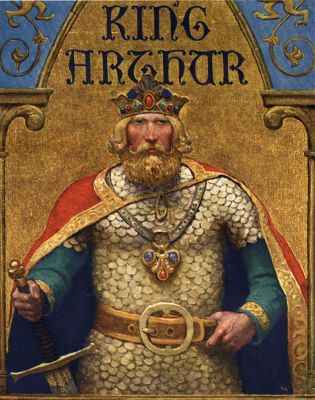
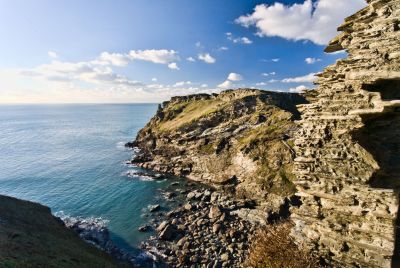
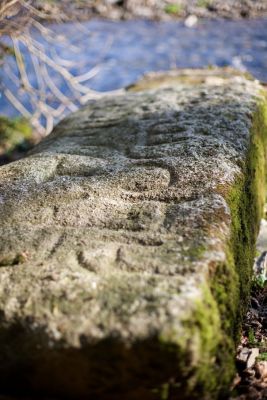
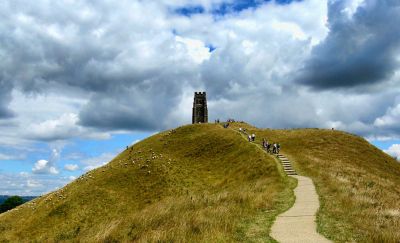

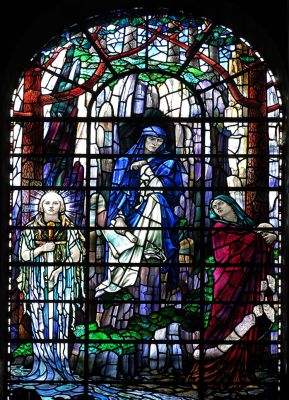
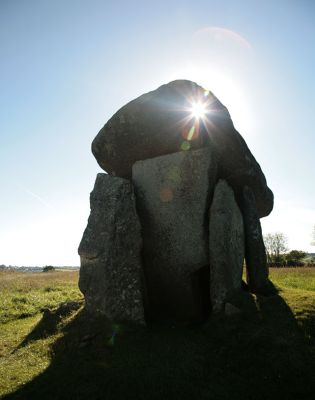
No comments:
Post a Comment